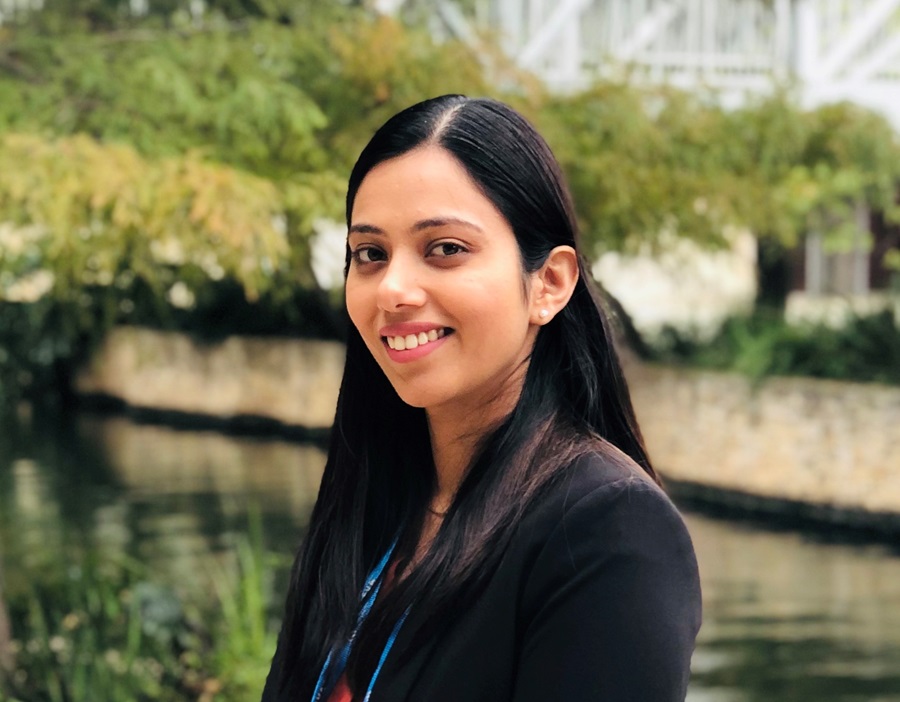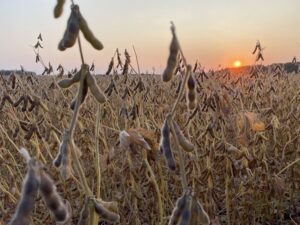The problem solvers: Dr. Inderjot Chahal
LEADING SOIL HEALTH RESEARCH IN CANADA AND AROUND THE WORLD

NITROGEN IS ONE OF THE MOST LIMITING NUTRIENTS FOR CROP PRODUCTION, YET IT’S THE MOST PRONE TO LOSSES FROM THE SOIL TO THE ENVIRONMENT. This is a problem that Dr. Inderjot Chahal, a post- doctoral fellow in the School of Environmental Sciences at the University of Guelph, Ridgetown Campus, is passionate about solving. “Dr. Chahal’s research is leading soil health knowledge in Canada and worldwide,” explains colleague Dr. Laura Van Eerd. “Her expertise is sought to lead the interpretation of complex soil datasets that expand the knowledge of the scientific community, policymakers, and farmer practitioners.”
But long before obtaining her master’s degree at California State University and her PhD at the University of Guelph, Chahal was a little girl with a keen interest in the natural world. “I would attribute my interest in studying plants to my grandfather, Mr. Gurmail Singh Chahal,” she explains. “He was passionate about gardening and would create lots of fun activities for all the grandkids to grow our interest in plants and insects. I really enjoyed spending time in the garden, helping in watering the plants, looking for earthworms, and pulling weeds. That’s where it all started.”
After secondary school, Chahal completed an undergraduate degree in agricultural science in India to better understand the processes and factors responsible for crop production. “I am still very passionate about agricultural research, specifically the interactions between the plants and soil,” she says. “To me, among all components of the crop production system, these interactions are the most fascinating.”
Broadly, Chahal’s research focuses on understanding the role of sustainable agricultural management practices such as cover crops, reduced tillage and crop rotation diversification on soil health, soil carbon storage and crop productivity. Nitrogen cycling and strategies to reduce nitrogen losses to the environment are a priority.
Chahal explains that a critical way to optimize soil nitrogen fertility and reduce nitrogen losses to the environment is to synchronize cover crop nitrogen release with the peak period of a crop’s nitrogen demand. “To understand this, we need to test the above- and below-ground cover crop residue decomposition dynamics under various soil types and management practices,” she says, “such as tillage systems and crop rotations.”
But while Chahal feels the benefits of adopting sustainable agricultural management practices such as cover crops are clear, they aren’t as widely used as they could be. “The soil management practices which contribute to building soil health (which build soil organic matter and soil carbon) are the keys to enhancing the resiliency of our production systems, but we still have this enormous challenge of increasing adoption,” she says. “Perhaps conducting comprehensive economic analysis and putting a dollar value on the benefits might help to move adoption rates upward.
In the long term, Chahal is also very interested in how to design cropping systems that better withstand adverse weather conditions without a decline in yield. “Due to climate change, the frequency of extreme weather events is expected to increase and enhancing the resiliency of cropping systems will be really beneficial to growers,” she says. “I am very interested in exploring the specific underlying biogeochemical mechanisms responsible for imparting resiliency.”
As she continues to inspire and inform more research and changes to agricultural practices in Ontario and beyond, Chahal is very happy to be pursuing a career where she uses the skills, expertise, and experience she has gained along her journey. “I would like to mention that I am extremely grateful for the guidance and motivation I have received from amazing agronomy and soil researchers, many of them women,” she notes. “They have inspired and played a key role in shaping my career. In turn, I look forward to being a mentor for the next generation of agricultural scientists.” •


























